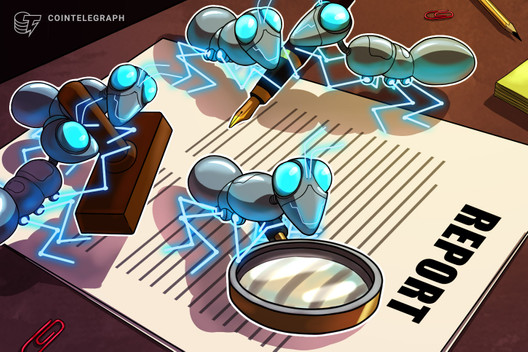
- Disastrous Otherside mint leaves many paying thousands of dollars in gas fees without receiving anything
- Yuga Labs refused to apologise, instead blaming Ethereum and citing the need to create their own blockchain in order to scale
- The whole episode sums up the growing centralisation of wealth in NFTs, with average investor getting priced out
- In a lot of ways, the Yuga ecosystem comes across as the exact opposite of what cypto is intending to be
What a circus this weekend turned into in the NFT world, and I don’t mean the good kind (are there any good kinds of circuses? They have always struck me as a bit cruel).
Yuga Labs, the company behind Bored Ape Yacht Club, had its much-anticipated Otherside mint on Saturday night, for the purchase of pieces of land in their upcoming metaverse game. The start-up, who were worth $4 billion before this weekend, had a pretty good weekend by all accounts, raking in approximately $320 million from the mint.
However, the lucrative windfall was the opposite of what transpired for most investors. Due to the colossal demand, Ethereum gas fees spiked into the four-figures, leaving many investors to stump up massive amounts of gas – and still not get land that they wanted.
Predictable Problems
The problem, however, is that everybody knew this was coming. Yuga’s actions were incompetent, and it wasn’t just their egregious failure to optimise the contract. They also abandoned the Dutch auction that had been originally intimidated, amid a total lack of transparency, and announced the mandatory ApeCoin purchase late.
Furthermore, they failed to prevent the mass farming of KYC wallets. Perhaps worst of all, they donated 15k to their investors, again amid a lack of transparency, which quashed the supply even more and spiked up the gas even higher. All this led to an entirely predictable gas war and many hopeful newbies losing thousands of dollars.
While Yuga have said they will refund gas to those who had failed transactions, that doesn’t help the thousands who could not secure land – as the company has refused to allow those who missed out preference in any ensuing sale, a move seen by lots in the community as very unfair.
I think @yugalabs can fix this. There are 100k deeds left that were going to distribute to current deed holders. They should WL all wallets that KYCed AND approved APE AND had enough APE to mint, but did not get to mint, and let them mint 1 over a week at 305 APE. Quick 🧵…
— exlawyer.eth/tez (@exlawyernft) May 1, 2022
But the fallout runs deeper, unfortunately. $100 million in liquidity was sucked from the NFT space, as traders sold their assets in order to stack up on the colossal amount of ETH required to purchase a plot (and also pay for gas). Etherscan crashed with all the activity, and Solana also suffered an outage due to the cascading failure of the blockchain’s validators, following a flood of bot activity after the mint. NFT collections elsewhere on Solana and Ethereum also saw prices drop as traders sold en-masse to get the funds in their wallets for the mint – a mint which then preceded to exclude many.
Waiting for months and checking the news every day…Did the KYC in time,bought Ape on high beacuse u annouced in the last minute,got ready 1ETH in metamask…got the shock with gas war…sent eth from binance to metamask…arrived 3 hours late…and no land…very disappointed
— B Bernadett (@Bernadett_4) May 1, 2022
Yuga Fail to Read the Room
The lack of transparency, consideration and plain old empathy from Yuga was pretty sad to see. Even worse, after being silent through a good portion of the catastrophe, they put out the below tone-deaf tweet, showing they have completely lost touch with the average investor. Refusing to apologise, they instead blamed Ethereum for the whole mess, asserting that they require a chain of their own to continue their grand ambitions for Web3 dominance.
We’re sorry for turning off the lights on Ethereum for a while. It seems abundantly clear that ApeCoin will need to migrate to its own chain in order to properly scale. We’d like to encourage the DAO to start thinking in this direction.
— Yuga Labs (@yugalabs) May 1, 2022
Anybody remotely familiar with crypto could have predicted this in advance, however, and the real blame is on Yuga for failing to optimise the contract. Their solution now is to create some sort of “BSC-style”, centralised blockchain, and expand their empire and power even more in the space?
As a reminder, this company already have the biggest NFT project on the planet in Bored Apes, the intellectual property rights to the second biggest collection in CryptoPunks, and their own coin with a market cap of over $4 billion. Now, they want their own blockchain, too?
Ethereum has problems, I won’t deny that, but with the Merge coming they are at least working on it. Not to mention the size of the community and the sheer number of incredibly intelligent individuals working on it. What exactly have Bored Ape Yacht Club done for the community? What has Yuga Labs done?
Centralisation of Wealth
It’s the latest episode that highlights quite how exclusive the NFT world is becoming. What average investor has the means to stump up four-figures in gas, plus the price of the actual land (which was 305 ApeCoin, worth $7,000 on Saturday) for the chance to enter the Yuga club? Increasingly, this is becoming a playground for the egregiously rich, where the consolidation of wealth is getting dizzier by the day. Sadly, that’s the exact opposite of what so many people love about crypto – a more democratic, fairer, and accessible monetary infrastructure.
Coming from someone who got a free $40K claim and a plot of land, Web3 is headed in the wrong direction
It’s just becoming a game of “sucks you shoulda had more money.” I had friends who were hyped who couldn’t afford the gas and thats bs
This is just becoming a rich kids club
— Justinn.eth (@Grove_x3) May 1, 2022
Additionally, many traders bought Yuga’s ApeCoin in order to make the purchase. ApeCoin, you may remember, was airdropped to all holders of Bored Apes in March. 10,094 coins appeared in each holder’s wallet, which is equivalent to $150,000 at current prices. Of course, already owning an Ape, which currently has a floor price around $300,000, means those who got airdropped the ApeCoin were already doing “well”.
Not to mention the fact that the tokenomics of ApeCoin are very lobsided, with 15% of supply retained by Yuga Labs, 14% going to BAYC founders, 15% to the first BAYC owners, and 8% who worked on the DAO launch. For those counting, that adds up to over half the supply.
This week’s Otherside mint was meant to finally be a route for “normies” to enter the ecosystem. Yet most were unable to do so due to the gas war, and more were further hurt by the fact that ApeCoin plummeted 40% after the mint issues. The bagholders there, of course, are those same normies who failed to convert that ApeCoin into what they wanted – Otherside land.
I’m out on Yuga. Lost over half of my NFT portfolio in the last couple days trying to get Ape for this because they told us it would be achievable. They lied to us. Cost me over $10k and now I can’t even sell this plummeting $Ape for half what I paid for it. I’m gutted.
— JungleGoat.eth (@JungleGoat) May 1, 2022
Anti-Crypto
As I said above, crypto was meant to be a fairer system; a more accessible, open and democratic monetary environment. Tell me, what exactly is fair here? A browse on Twitter will see Ape holders lambasting those complaining about Saturday’s mint for not having the courage or means to pay the gas elevated gas fees. HFSP, or NGMI, are the common acronyms to those who failed to secure a plot of land. I wonder how different their attitude would be had they not got their hands on an Ape before the price rocketed up to where it is now.
PERFECT LAUNCH! HAPPILY PAID 1.7 ETH IN GAS…THE FLOOR IS 8.5 ETH RIGHT NOW! STOP CRYING!
— Cheetah Cowboy (@MetaverseWorld) May 1, 2022
As a diehard crypto fan, who spends half his time defending the industry to sceptics in trad-fi and beyond, it’s an upsetting day. It’s symbolic of one of the oft-criticised features of crypto – the centralisation of wealth. This was always meant to be the place for the underdog, where anybody could make themselves into a somebody.
Signing Off
I’ll likely be written off as a disgruntled nobody; a normie who is sad they don’t have a piece of the BAYC empire. Honestly, that’s kind of true – I own no part of Yuga, and I am sad, but not for that reason. I’m sad because I love crypto, and I love the opportunities it presents. What I see in Yuga right now is the opposite of what gets me so excited to be in this space; the opposite of why I quite my trad-fi job to make the leap across.
Sure, it would be nice to be in the Bored Ape Yacht Club for financial reasons. But right now, it’s more like a Bored Ape 1% Club.
I may be staying poor, but at least I’ll have fun doing so.
The post Bored Ape 1% Club makes me sad I quit my trad-fi job appeared first on Coin Journal.





